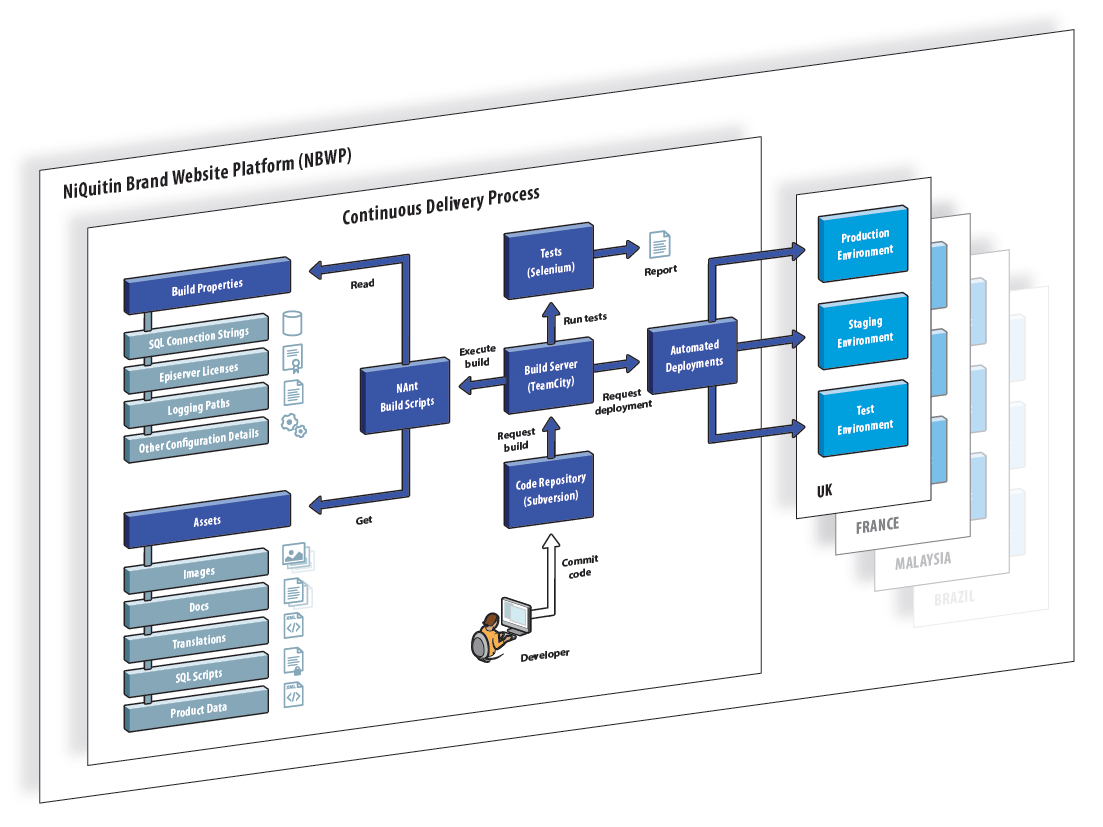Background
The NiQuitin brand showcases nicotine replacement products developed by GlaxoSmithKline (GSK) and which are designed to ease withdrawal systems for smokers attempting to quit. Products currently available on the market include patches, lozenges, strips, gum, and transdermal systems.
This case study looks at the development work that Priocept completed for GSK in order to put in place a multi-lingual, multi-site web platform to support the NiQuitin brand’s global web presence.

NiQuitin Brand Website Platform
Priocept were approached by GSK to provide development and consultancy services for digital initiatives relating to the Nicotine Replacement Therapy (NRT) programme. This included the creation of a new platform to support their global brand websites.
A key success factor for GSK was to ensure that the platform allowed rapid, low-cost rollouts of new regional websites. Although the sites are fundamentally just online brochures for the localised NiQuitin brands, the setup activities involved a multitude of tasks such as translation, content entry, search engine optimisation, environment configuration, and following pharmaceutical regulatory approval processes. The costs of these activities, when multiplied by the number of local websites required, increased exponentially.
The solution was further complicated as GSK’s policies required each site to be individually hosted on servers commissioned in local regions. This ruled out a central platform for the management of all sites.
To overcome these challenges, Priocept developed the NiQuitin Brand Website Platform (NBWP) as a single code base for GSK to create and deploy all of their regional brand websites. It ensured a uniform set of features, functionality, and branding across all regions and allowed local brand managers to quickly release and apply updates to their global sites.
The system went on to support websites for Argentina, Belgium, Brazil, France, Malaysia, the Middle-East, Russia, Spain, Turkey and the United Kingdom.
Features
NBWP has the following features:
- Multi-Lingual – Each local site can be created in as many languages as required.
- Search – Full indexing and intelligent search capabilities covering all content on the site.
- Search Engine Optimisation (SEO) – The ability to create friendly URLs and add keywords and descriptions for each page.
- Disclaimer Integration – As a pharmaceutical company the use of approved legal disclaimers throughout the sites was essential to GSK. The disclaimer text was synchronised from GSK’s internal systems via web service integration.
- Web Analytics – The website was initially developed to work with Omniture and later amended to use Google Analytics for tracking website usage. Configuration settings are all manageable in the CMS.
- Web Content Management – The system is built around Episerver CMS which gives users full control over all content.

Technology
The NiQuitin brand websites were functionally limited, ultimately serving as online brochures for the local brands. The complexities in the application arose from the need to create a centralised code base which could be built and deployed for different regions that were disparately hosted on servers around the globe.
To achieve this Priocept used software engineering and “continuous delivery” best practices to automate the build and deployment processes. The diagram below describes the application build process in more detail.
The solution is comprised of the following components:
- NAnt Builds – NAnt is a commonly used .NET build tool. It uses a simple XML format to specify project dependencies and resources. NAnt reads configuration data from a build properties file that contains information on logging paths, database connections, server addresses, and other application details.
- Assets – All assets such as images and scripts are kept in this folder location. This folder also contains localised XML which defines translations for labels and other standard content throughout the sites. This allows a new region to simply edit the XML file and have a new site instantiated in their local language via the automatic build process.
- Web Application – The application is built around Episerver CMS, which runs on the Microsoft .NET platform.
- Database – SQL Server database that stores the website content.
- Build Server – TeamCity is used for building the application as part of the Continuous Integration (CI) process.
- Automated Tests – The build server automatically runs Selenium tests on key functionality and features of the website when code is checked in to the source control repository.
By structuring the project in this way it ensured that there was a single code base that could be quickly deployed for new and existing regions simply by editing a few lines of configuration. Priocept provided an elegant solution to a complex problem and through the application of rigorous, best-practice software engineering were able to help GSK achieve their business objectives.

